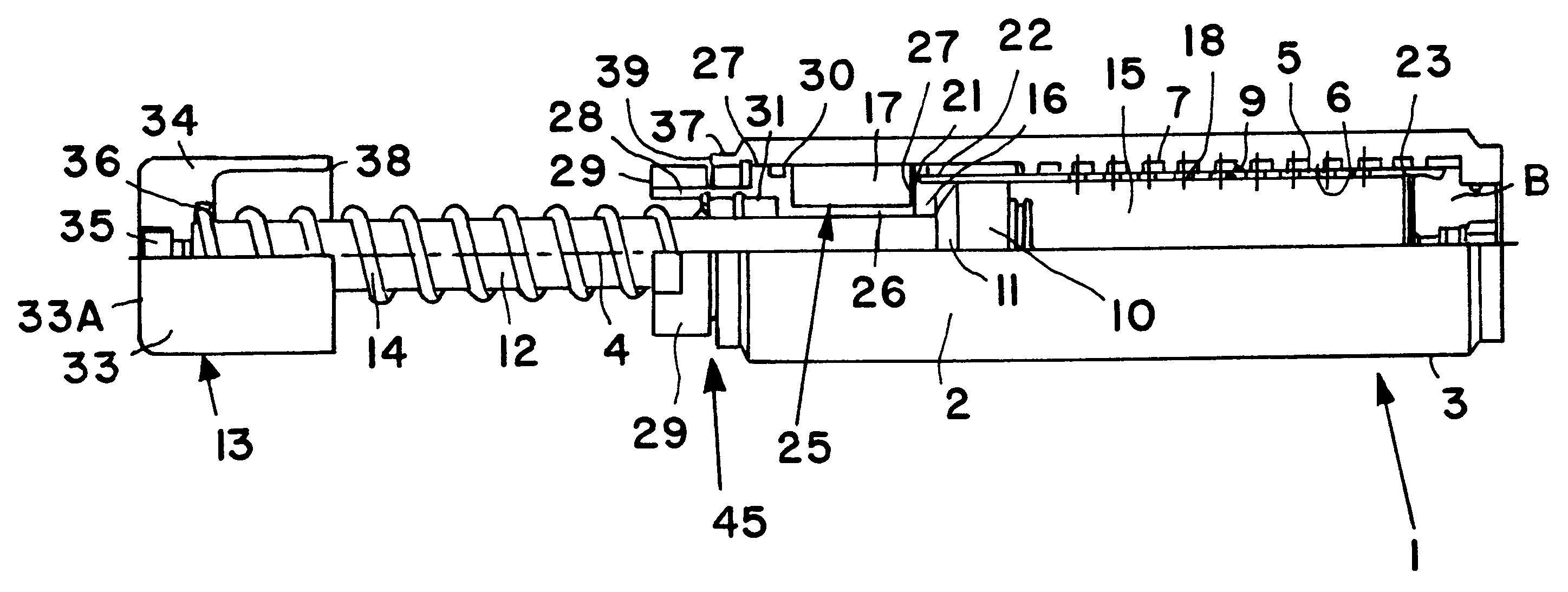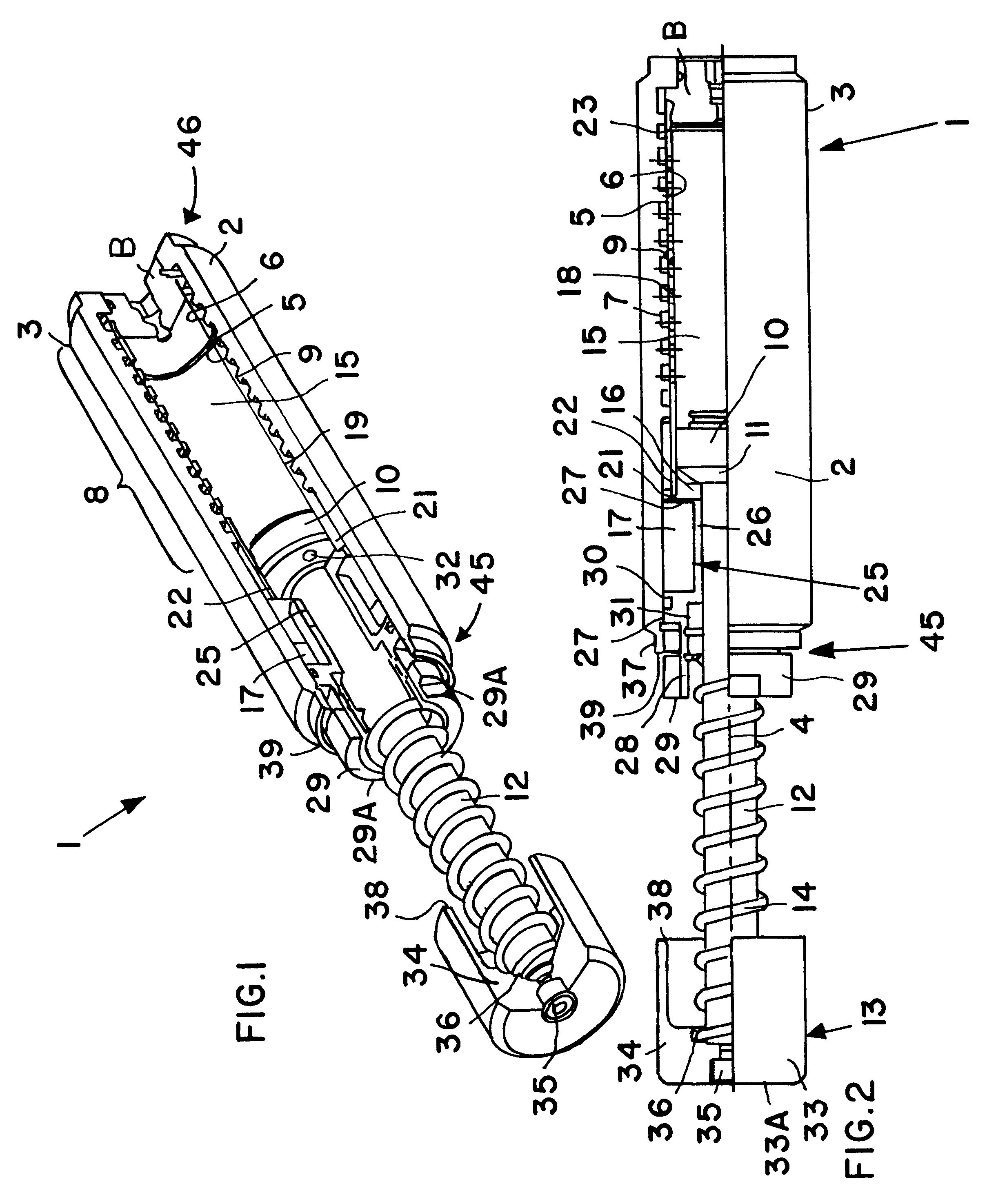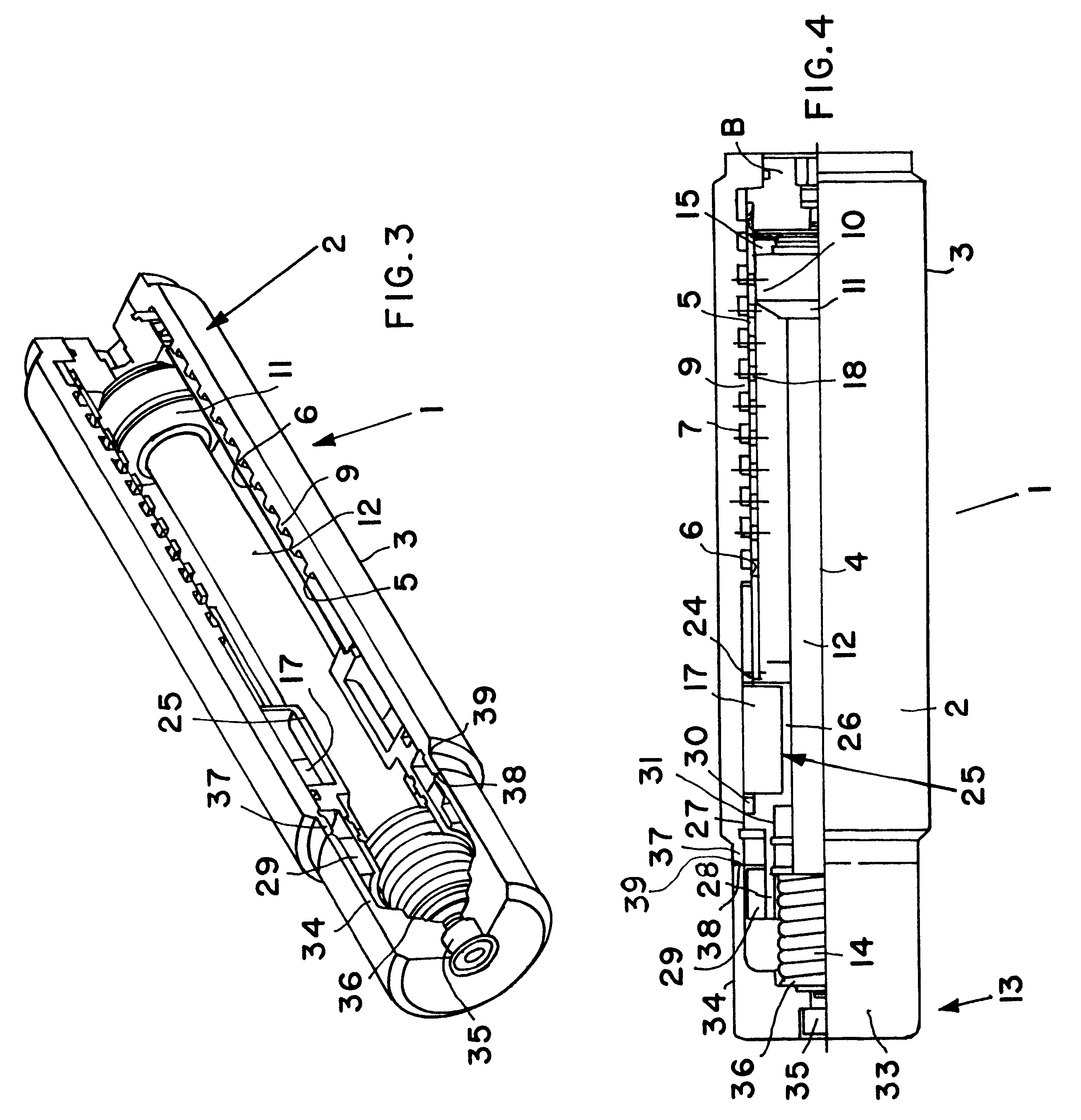Shock absorber with cup-shaped stop cap
a technology of shock absorber and stop cap, which is applied in the direction of vibration dampers, resilient suspensions, vehicle components, etc., can solve the problems of affecting the adjustment of shock absorbers, and introducing large forces into the support elements
- Summary
- Abstract
- Description
- Claims
- Application Information
AI Technical Summary
Benefits of technology
Problems solved by technology
Method used
Image
Examples
Embodiment Construction
The shock absorber 1 shown in FIGS. 1 to 4 comprises a cylindrical pipe-shaped housing 2, of which the outer cylindrical surface 3 is preferably entirely and continuously provided with an external threading which allows the shock absorber 1 to be mounted and secured in any suitable mounting bracket or machine component or the like. Other means for mounting the shock absorber may be provided instead of or in addition to the external threading. The shock absorber 1 further comprises a pressure pipe 5 arranged in the housing 2 coaxially relative to the lengthwise axis 4 thereof. The pressure pipe 5 in this embodiment is generally a hollow cylindrical sleeve open at both ends thereof, but alternatively it could be closed at one end thereof. In the latter embodiment, the closed end of the pressure pipe 5 can simultaneously form the closed end of the housing 2.
A spiral groove 7 is formed in an inner cylindrical surface 6 of the housing 2, whereby this groove 7 extends over an axial range ...
PUM
| Property | Measurement | Unit |
|---|---|---|
| damping | aaaaa | aaaaa |
| force | aaaaa | aaaaa |
| inner diameter | aaaaa | aaaaa |
Abstract
Description
Claims
Application Information
 Login to View More
Login to View More - R&D
- Intellectual Property
- Life Sciences
- Materials
- Tech Scout
- Unparalleled Data Quality
- Higher Quality Content
- 60% Fewer Hallucinations
Browse by: Latest US Patents, China's latest patents, Technical Efficacy Thesaurus, Application Domain, Technology Topic, Popular Technical Reports.
© 2025 PatSnap. All rights reserved.Legal|Privacy policy|Modern Slavery Act Transparency Statement|Sitemap|About US| Contact US: help@patsnap.com



